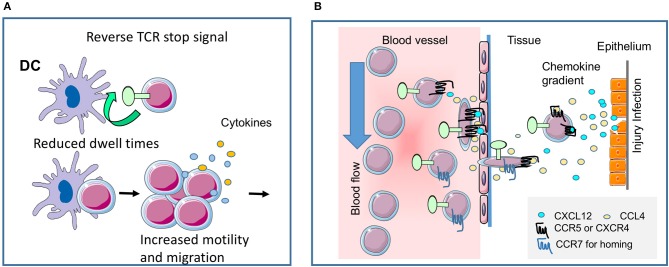Figure 2.
CTLA-4 regulates T-cell motility. (A) Reverse-stop signal model of CTLA-4 (and PD-1). CTLA-4 induces T-cell motility and limits T-cell binding to DCs during antigen-presentation (1, 2). Agonistic CTLA-4 ligation could directly activate the motility of T-cells and thereby interfere with the dwell times of cells with DCs presenting antigenic peptide. PD-1 can function in a similar way (5). (B) CTLA-4 modulates response to chemokines. Chemokine gradients attract T-cells to the site of injury and inflammation. CTLA-4 can alter motility by up-regulating key chemokine receptors CCR5 and CCR7 and the sensitivity toward the chemokines CCL4 (MIP-1β), CXCL12 (SDF1α) and CCL19, but not CXCL9 (MIG) (3). The scheme was drawn using pictures from Servier Medical Art.

